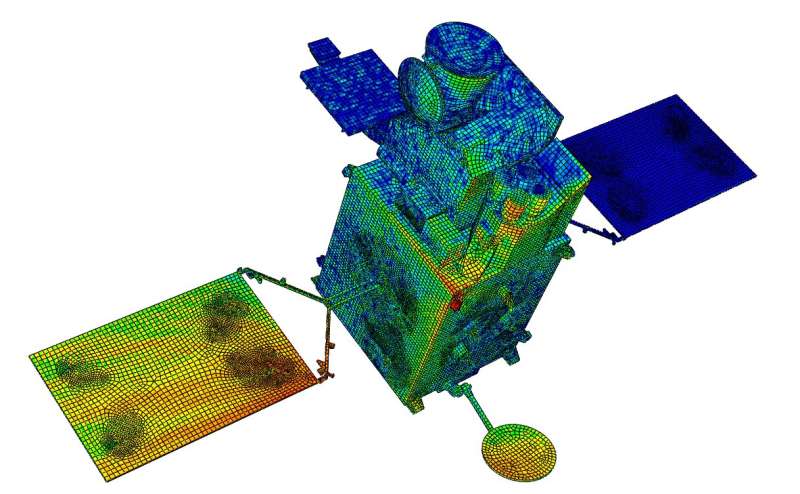Image: Radio frequency model of Europe's future Meteosat Third Generation Imager (MTG-I) satellite

This mesh-based model of Europe's future Meteosat Third Generation Imager (MTG-I) satellite has helped select the optimal location of the radio frequency antennas used to send it commands and downlink mission telemetry.
The model gives engineers insights into the resulting radio frequency characteristics of the satellite itself. The colours indicate the induced electromagnetic response of adjacent surfaces when these antennas are active.
The red spot in the corner of the satellite body indicates the location of one of these S-band microwave antennas used for "telemetry, tracking and telecommand," with another out of view on the satellite's opposite side. The other colours show the resulting current across MTG-I, from orange on antenna-facing surfaces down to yellow, then green and finally the minimum intensity in blue.
This helps antenna engineers to calculate the "link budget" or overall coverage and efficiency of these antennas in different positions, across both stowed and deployed configurations.
This model was prepared for MTG-I by ESA's Antenna Computational Facilities (ACF), part of the Agency's Antenna Test Facilities, based at its ESTEC technical centre in the Netherlands. Equipped with state-of-the-art software, the ACF solve complex electromagnetic problems across the entire radio spectrum in cooperation with European universities and industry.
Meteosat Third Generation, planned to enter service from 2021 onwards, will comprise four imaging and two sounding satellites. The latter, in a first for Europe, will carry an Infrared Sounder and Ultraviolet Visible Near-infrared Spectrometer, being provided by ESA to serve as the Copernicus Sentinel-4 mission.
Provided by European Space Agency




















